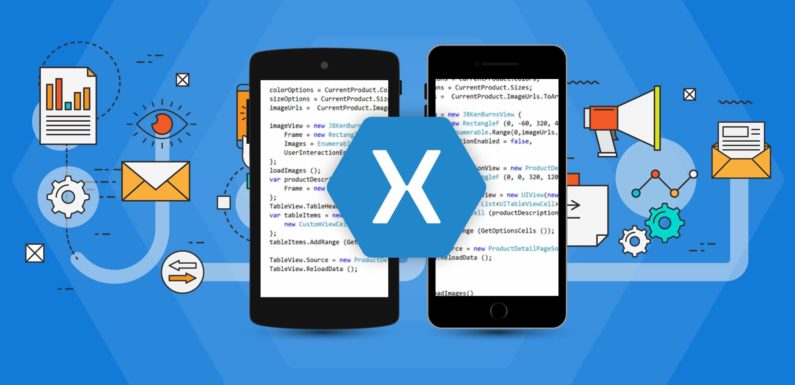
A well-developed mobile application is the dream of every enterprise. It can help you win the loyalty of your existing customers, bring in new ones, and even exploit a new market. However, to ensure the best performance of any mobile app, it would be a good idea to design it with a particular device in mind.
It is true that you can leverage your developer’s skills in HTML and Javascript to develop iOS and Android apps for any phone or tablet. However, the problem with web apps is that they are not wired to function optimally on the respective mobile devices. So, if you are looking to create a great app that can beat the competition, then build native cross-platform apps would be a good choice.
You can opt for any of the popular tools to build a cross-platform app, but Xamarin beats them all with its unique features. The main reason being its capability to cut costs. Here are some ways in which Xamarin helps you develop apps within your budget:
Xamarin works with a single coding language and single IDE
You can cut costs with Xamarin because it lets your developers work with a single coding language and single IDE or Integrated Developer Environment. You don’t have to use different languages or IDEs for different devices. So if you are developing apps for iOS or Android platforms, then you don’t need developers with Objective-C for Apple apps and C# for Windows apps and Java for Android apps. This way you can cut down the time (for developing the apps) and money (developer salaries and related expenses).
Shared code
Through Xamarin, you can compile the code that your developer created for one device in such a way that it can be reused for another device or platform. For example, if you have already built an app for Apple devices, you can reuse about 70% of the code for creating Android apps. The conversion process will be done from Xamarin.iOS to Xamarin.Android.
The remaining 30% of the code will be used for creating the Android device’s unique user interface. You don’t have to build two different apps from scratch, but just a single app from scratch and then reuse the code to build another. The base will be there for you to use, which will significantly cut development costs.
Saving money through Xamarin Test Cloud
As explained earlier, Xamarin lets you have shorter development cycles. This gives you the opportunity to experiment with apps and learn more about customer insights. Xamarin Test Cloud is a platform where you can upload your app logic, and see how it performs over a thousand virtual devices. The Test Cloud isn’t free but is the best means through which you can gauge customer engagement.
Create native interfaces for each device
It is possible to build apps in Xamarin.Forms. This helps you build native interfaces for each device you are developing the app for. Forms is a great help in using more than 90% of the code you’ve written and this helps you to create various versions of the same app. Imagine the hours of development time you are able to cut this way. However, you can opt for Xamarin.iOS or Xamarin. Android when your priority is to use the particular device’s unique controls.
Software deployment becomes easier
In the usual scenario, software deployment is a repetitive and frustrating task. Xamarin helps you orchestrate this process easily. Your developers can create new builds, test it automatically and then deploy them either through on-premise solutions or through hybrid cloud deployments. Distribute your apps in a unified fashion across all platforms and collect feedback, information about bugs, and live crash reports. Testing in the Xamarin Cloud is not free, but it can definitely fall within your budget.
Xamarin has fewer bugs
C# is a simple and general purpose language. And since the developers can share code, there is no need to worry about bugs. Lesser code means fewer chances of bugs. The type safety in the code will help prevent errors that might lead to flawed programs.
Closing thoughts
Xamarin is an appealing option for everyone, including the user, the developer-world, and enterprises. They have realized that switching to this platform can save costs considerably. You get to gain monetary value for your app and find a larger market for it without going beyond your budget.
Once your app is live, you can make use of Xamarin insights to track usage patterns and its performance. Once the insights from the data are collected and analyzed, integrate useful changes into your app in the form of app updates, or use it for building new apps. By studying the usage patterns and analytics, you can also learn about crashes and bugs, and this helps you build better apps.



